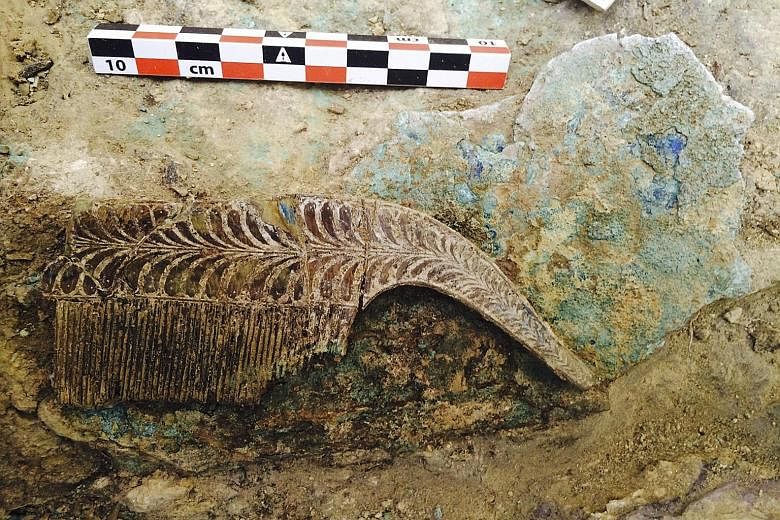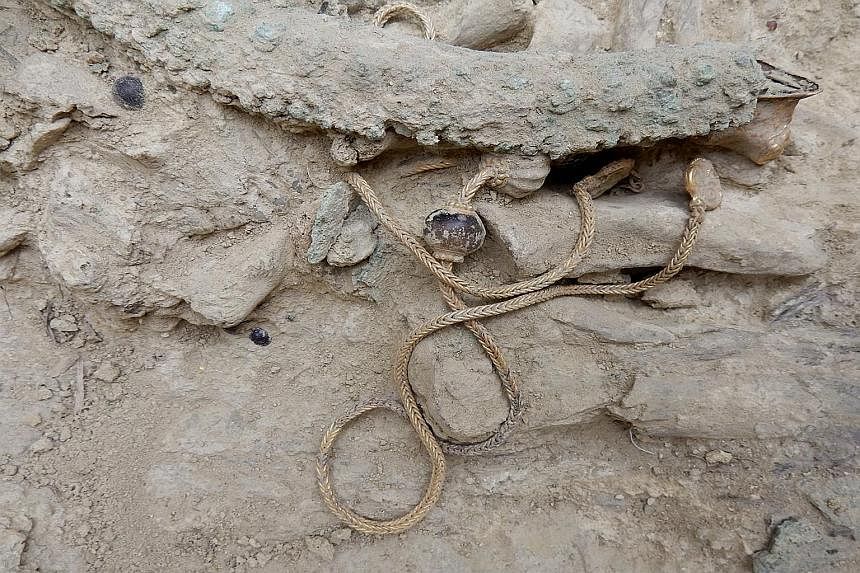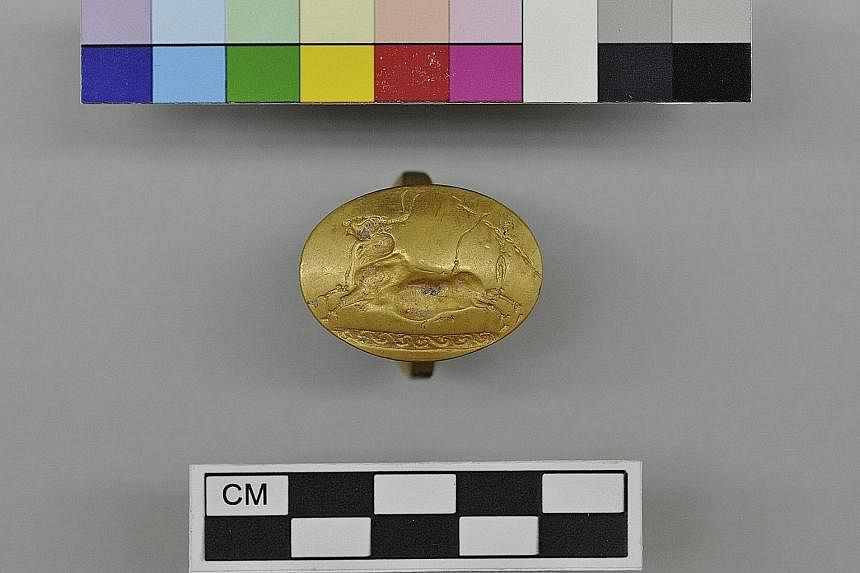NEW YORK • Archaeologists digging at Pylos, an ancient city on the south-west coast of Greece, have discovered the rich grave of a warrior who was buried at the dawn of European civilisation.
He lies with a yard-long bronze sword and a remarkable collection of gold rings, precious jewels and beautifully carved seals.
Archaeologists expressed astonishment at the richness of the find and its potential for shedding light on the emergence of the Mycenaean civilisation, the lost world of Agamemnon, Nestor, Odysseus and other heroes described in the epics of Homer.
"Probably not since the 1950s have we found such a rich tomb," said Professor James C. Wright, the director of the American School of Classical Studies at Athens.
The warrior's grave belongs to a time and place that give it special significance. He was buried around 1,500BC, next to the site in Pylos on which, many years later, arose the palace of Nestor, a large administrative centre that was destroyed in 1,180BC, about the same time as Homer's Troy.
The palace was part of the Mycenaean civilisation; from its ashes, classical Greek culture arose several centuries later.
The palaces found at Mycenae, Pylos, and elsewhere on the Greek mainland have a common inspiration: All borrowed heavily from the Minoan civilisation that arose on the large island of Crete, south-east of Pylos. The Minoans were culturally dominant to the Mycenaeans but were later overrun by them.
How, then, did Minoan culture pass to the Mycenaeans? The warrior's grave may hold many answers. He died before the palaces began to be built, and his grave is full of artefacts made in Crete.
"This is a transformative moment in the Bronze Age," said Dr Thomas M. Brogan, the director of the Institute for Aegean Prehistory Study Center for East Crete.
The grave was discovered on May 18 by Professor Jack L. Davis and Dr Sharon R. Stocker, a husband-and- wife team at the University of Cincinnati who have been excavating at Pylos for 25 years.
The coffin has long since decayed, but still remaining are the bones of a man about 30 to 35 years old and lying on his back.
Placed to his left were weapons, including a long bronze sword with an ivory hilt clad in gold, and a gold-hilted dagger. On his right side were four gold rings with fine Minoan carvings and some 50 Minoan seal stones carved with imagery of goddesses and bull jumpers.
"I think these objects were not just loot but had a meaning already for the guy buried in this grave," Prof Davis said. "This is the critical period when religious ideas were being transferred from Crete to the mainland."
NEW YORK TIMES



